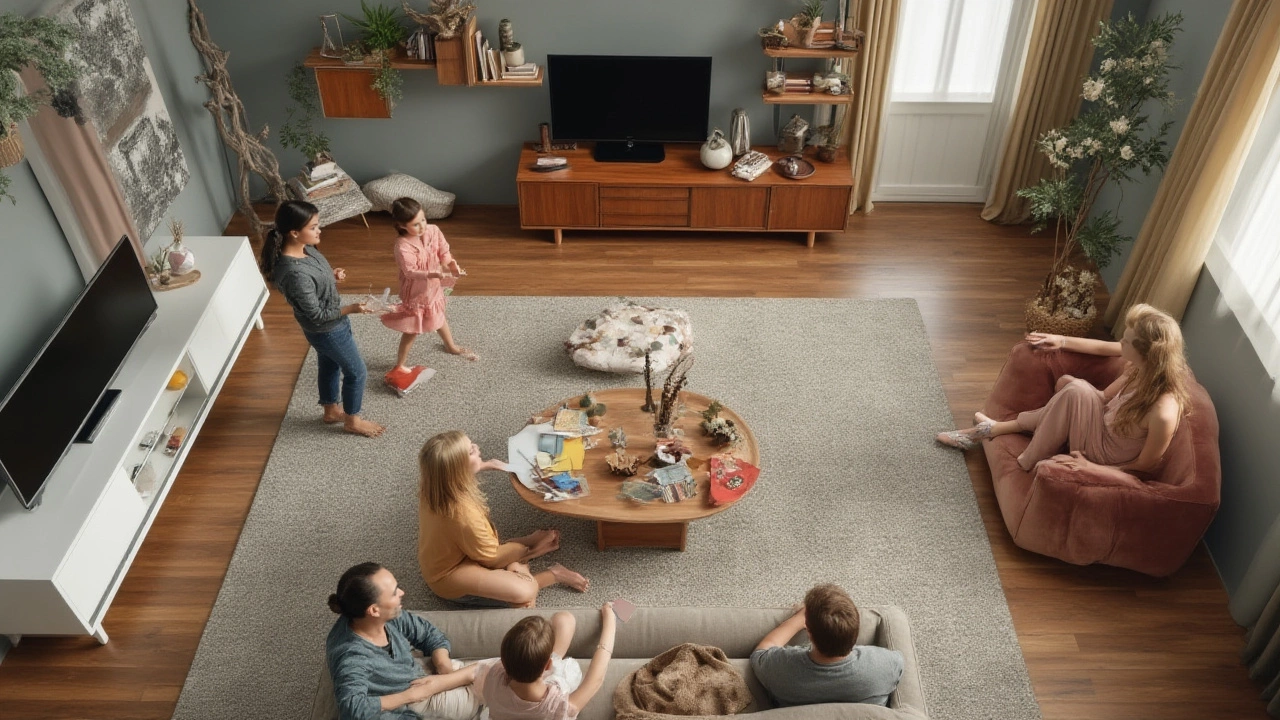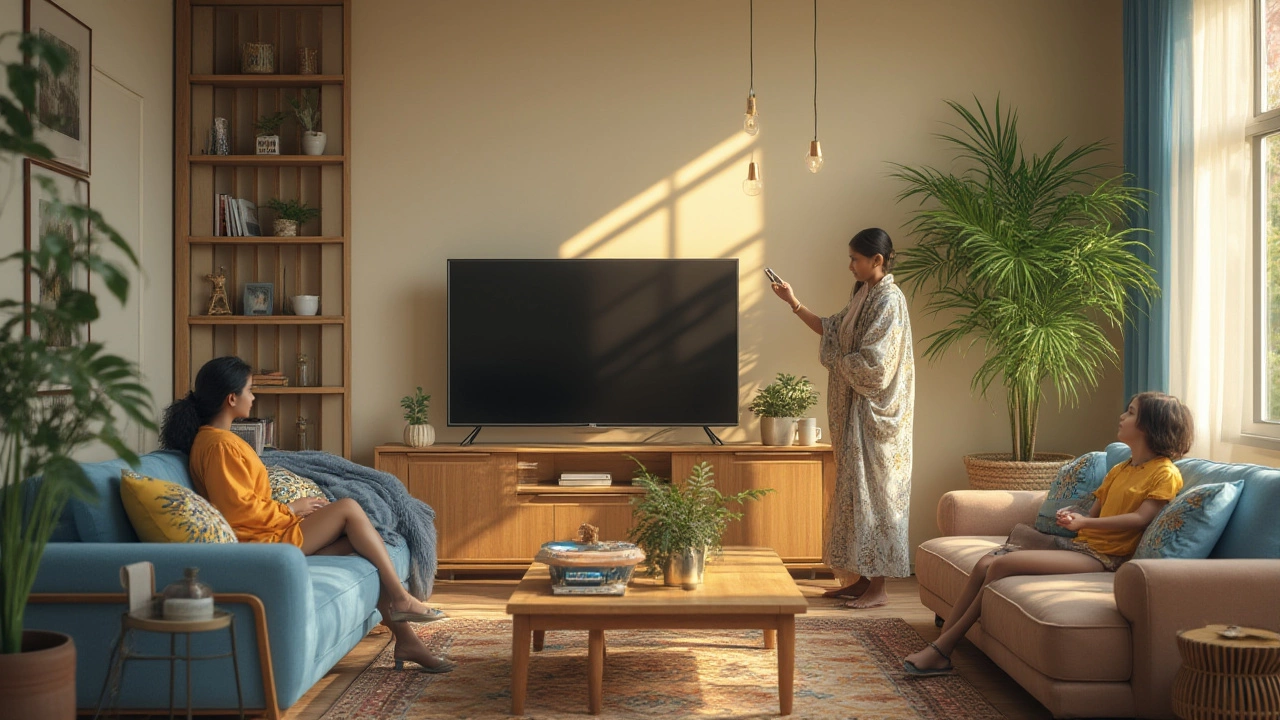Ever bought a TV stand on impulse and then spent weeks pretending it wasn’t slightly wrong for your living room? You’re definitely not the only one. Matching your TV stand isn’t just about digging through a pile of catalog pictures or chasing this month’s color trends. It’s like picking the right pair of shoes for your outfit—get it right, and suddenly, the whole room just feels better. Let’s cut through the noise, unpack some pro tips, and get to what really matters when you’re figuring out what your TV stand should actually match.
Should Your TV Stand Match Your Other Furniture?
Here’s the million-dollar question: does your TV stand have to match everything else in your living room? Surprise—it really doesn’t have to, but there are some smart tricks behind making it work. First off, furniture in modern homes almost never looks like it walked in from the same showroom set. Most people in 2025 are doubling down on mix-and-match style, where the focus is on harmony instead of identical pieces. If you take a peek at recent studies from interior designer surveys (like the 2024 Houzz Interior Design Trends), over 67% of homeowners actually prefer coordinated looks over matching sets.
So, what does that look like in action? Let’s say you’ve got a dark wood TV stand and a sleek grey sofa. No need to toss the TV stand or cover your sofa in wood-printed slipcovers. Try picking up smaller items—think side tables or frames—that echo shades from both main pieces. Your stand can become the anchor that ties the whole space together, even if nothing “matches” perfectly at first glance.
Even the size and shape play a role here. A chunky, solid TV stand puts out a different vibe than slender metal legs or floaty glass. If your coffee table’s got thin legs, for example, you might want your stand to echo that lightness, or at least not totally overshadow it. Balance isn’t about identical twins—it’s about making sure nothing noticeably sticks out, like someone shouting in a quiet room.
There’s also the function to think about. TV stands aren’t just boxes on the floor anymore. Many have shelving, cabinet storage, or spots for game consoles and sound bars. If most of your furniture doubles as storage, grab a TV stand with drawers or cupboards. If you like open shelving, keep that theme going here. It’s all about keeping a sense of unity—your setup should look intentional, not like a lucky accident.
Matching Colors: All-In or Subtle Coordination?
Color can make or break your living room harmony. Matching the color of your TV stand to other major pieces, like your sofa or coffee table, might seem logical. But go too hard in one direction, and you end up with a room that looks as if it’s stuck in a hotel lobby. People crave personality, not perfection. It’s all about finding the right dose of matching that works for your space.
A classic approach: stick within two to three core colors for your main furniture, then let your TV stand fit one of those. This doesn’t mean it has to be an exact shade—close enough is usually good enough. For example, if your sofa is navy blue, your TV stand could be a lighter blue or even a charcoal gray with some blue undertones. Take a scroll through top-ranked interior design Instagram handles and you’ll spot this trick everywhere this year.
Here’s an easy way to test if a color works: pick up a throw pillow or art print that has your TV stand color in the mix. Set it nearby for a day or two. If it starts to feel at home, you’re onto something. If it screams for attention or looks plain weird, odds are the TV stand will too. If in doubt, go for neutrals—black, white, light gray, and brown never let you down and play nice with just about every color scheme.
Contrast works wonders as well. If you’ve got mostly leather, dark woods, or heavier textures, a light-toned TV stand can freshen things up. For minimalist rooms, adding a bright or patterned stand brings a pop of personality. But don’t let boldness go unchecked—every strong color or pattern should have a friend in the room, like matching planters or a rug with similar accents.
Want a cheat sheet for choosing color? Check this out:
| Room Style | Best TV Stand Colors | Avoid |
|---|---|---|
| Modern Minimalist | White, black, natural wood | Ornate finishes, heavy patterns |
| Bohemian | Light oak, painted pastels, vintage turquoise | High gloss, mirrored surfaces |
| Traditional | Mahogany, walnut, deep espresso | Ultra-light bamboo, metal-only stands |
| Industrial | Weathered wood, gunmetal gray, matte black | Shiny chrome, soft pinks |
If your head is spinning with color choices, remember: you want your TV stand’s finish or hue to talk to at least one other element in the room. Not scream over it.

Material and Style: Mixing for a Cohesive Look
Material says as much as color. In fact, it might matter more. Browse high-end design guides and you’ll spot a pattern: wood and metal are the dynamic duo right now. If your other furniture is packed with natural wood grains, a metal-and-wood TV stand keeps things from getting visually heavy. But toss in glass or high-gloss lacquer, and you can tilt into luxury territory—if that’s your thing.
And here’s the cool part—styling opposites can actually create a stronger bond in the room. Rustic farmhouse tables set off against a jet-black TV unit with brass handles? That combo feels fresh and intentional. Sleek white furniture with an industrial steel stand grounds the look—and screams “I know what I’m doing.”
But don’t overdo it on the mixing. Too many textures or contrasting styles, and you'll end up with a room that feels chaotic not curated. Think about having no more than three main materials or finishes between your biggest pieces—the TV stand, coffee table, and sofa. If you have a vintage leather couch, pair it with a reclaimed wood TV stand for warmth and edge, then toss in metal accents through lamps or picture frames.
- Light woods (oak, ash, beech) pair well with contemporary or Scandinavian spaces.
- Darker woods (walnut, chestnut, mahogany) lean towards traditional or moody modern rooms.
- Glass and chrome scream ultra-modern, while painted or distressed finishes feel more eclectic.
If you’re buying online, zoom into the product photos. Look for real wood textures, not fake-printed finishes. If you’re still unsure, order or view a swatch if possible. Nothing replaces checking the texture and feeling the surface for yourself—after all, a glossy stand looks one way on your screen, but can feel completely different in your space at home.
Practical Tips for Choosing the Right TV Stand
Alright, you know what your TV stand should (and shouldn’t) match. Now how do you nail the exact one for your life? Don’t grab what’s trendy just because everyone on TikTok is raving about it this week. Start with the footprint. The sweet spot: your TV stand should be at least as wide as your TV, with room for game consoles, remotes, and a little extra breathing room on the sides. Most interior pros suggest adding at least 6 inches on each side to avoid the dreaded "TV looks top-heavy" effect.
Height also matters. For the best view, your screen’s center should be eye level when seated. In a 2023 poll by Apartment Therapy, 58% of people regretted picking stands that were too tall or too short. Save yourself the neck strain—average couch seat height is about 18 inches, so your TV stand should usually sit between 20 and 26 inches high unless you’ve got a serious recliner collection.
- Measure everything before shopping. Write it down—don’t trust your memory.
- Check for cable management holes or hidden panels. You’ll thank yourself when setting up game consoles and sound systems.
- Think storage. Closed cabinets make life easier if you hate clutter. Open shelves work for showing off books, plants, or collectibles.
- If your TV stand is in an open-plan space, consider how it faces both your lounge and other zones. Sometimes you want the back as tidy as the front—especially with floating or midroom options.
- Match the mood. If you love cozy, go for warm woods. If you want a crisp look, hit up clean metal lines or gloss surfaces.
For apartments, try stands with legs so you can vacuum underneath (and find those missing socks). Family room? Opt for rounded edges and sturdy builds—kids and pets aren’t gentle.
And don’t sleep on lighting. LED strip lighting on the stand’s back or interior shelves boosts the drama, looks straight out of a design magazine, and also helps avoid late-night toe stubbing. Plenty of modern units come prewired, saving you a DIY headache.
Your TV stand should work for your lifestyle as much as your style—otherwise, it’ll just annoy you every time you watch a show.

